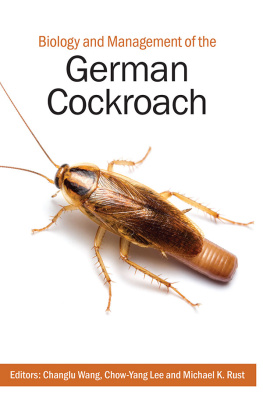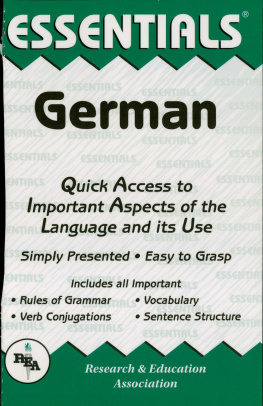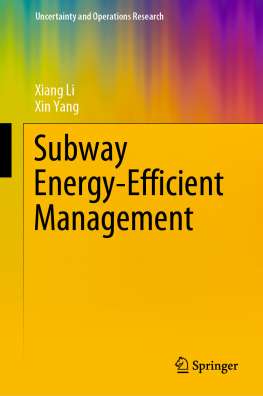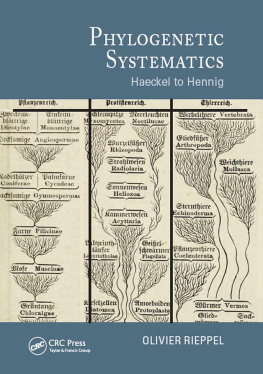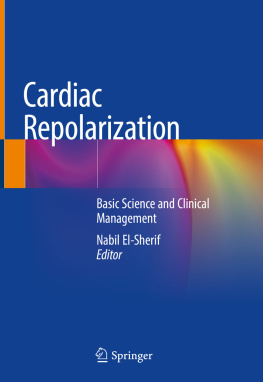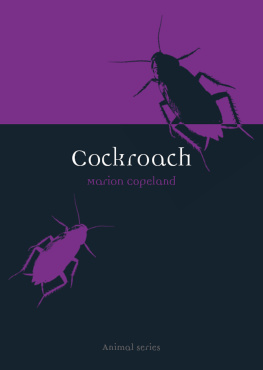Table of Contents
Copyright The Authors 2021. All rights reserved.
Except as permitted by applicable copyright laws, no part of this publication may be reproduced, stored in a retrieval system or transmitted in any form or by any means, electronic, mechanical, photocopying, recording, duplicating or otherwise, without the prior permission of the copyright owner. Contact CSIRO Publishing for all permission requests.
The authors and editors assert their moral rights, including the right to be identified as an author or editor.
A catalogue record for this book is available from the National Library of Australia.
ISBN: 9781486312061 (hbk)
ISBN: 9781486312078 (epdf)
ISBN: 9781486312085 (epub)
Published in print in Australia and New Zealand, and in all other formats throughout the world, by CSIRO Publishing.
CSIRO Publishing
Locked Bag 10
Clayton South VIC 3169
Australia
Telephone: +61 3 9545 8400
Email:
Website: www.publish.csiro.au
A catalogue record for this book is available from the British Library, London, UK.
Published in print only, throughout the world (except in Australia and New Zealand), by CABI.
ISBN 9781789248104
| CABI | CABI |
| Nosworthy Way | We Work |
| Wallingford | One Lincoln Street, 24th Floor |
| Oxfordshire OX10 8DE | Boston, MA 02111 |
| UK | USA |
| Tel: +44 (0)1491 832111 | Tel: +1 (617)682-9015 |
| Fax: +44 (0)1491 833508 | E-mail: |
| Email: |
| Website: www.cabi.org |
Cover: Female German cockroach with ootheca (photo by Matt Bertone)
Set in 10.5/12 Minion and Stone Sans
Edited by Adrienne de Kretser, Righting Writing
Cover design by Cath Pirret Design
Typeset by Envisage
Printed in China by Leo Paper Products Ltd
CSIRO Publishing publishes and distributes scientific, technical and health science books, magazines and journals from Australia to a worldwide audience and conducts these activities autonomously from the research activities of the Commonwealth Scientific and Industrial Research Organisation (CSIRO). The views expressed in this publication are those of the author(s) and do not necessarily represent those of, and should not be attributed to, the publisher or CSIRO. The copyright owner shall not be liable for technical or other errors or omissions contained herein. The reader/user accepts all risks and responsibility for losses, damages, costs and other consequences resulting directly or indirectly from using this information.
The paper this book is printed on is in accordance with the standards of the Forest Stewardship Council and other controlled material. The FSC promotes environmentally responsible, socially beneficial and economically viable management of the worlds forests.
Jan21_01
Contents
The German cockroach is a major indoor pest worldwide. Numerous products have been developed to control this pest, yet German cockroaches continue to be prevalent in homes, restaurants, ships, transportation systems, hospitals and many other types of modern indoor environments. Their small size, short life cycle and ability to develop insecticide resistance allow them to survive and flourish. German cockroaches contaminate food, transmit pathogens and produce allergens that trigger asthma. They also pose significant long-term economic cost to residents and building management. With increased urbanisation, trade activities and travel, we may expect continued increases in the abundance and economic importance of this pest.
The last comprehensive reference book dedicated to the German cockroach was published in 1995 by Rust, Owens and Reierson. Since then, the World Health Organization has recognised cockroaches as a serious public health threat. Better understanding on cockroach allergens and their relationship with allergy and asthma underscores the importance of the German cockroach as a medically important pest and the need for more effective cockroach management. Numerous advances in control technology, products, and basic and applied research have occurred over the last 25 years. Baits have replaced sprays as primary German cockroach management methods. Information on cockroach microbiome provides new insights on cockroach physiology and potential novel targets for control. Population genetic studies allow for better understanding of cockroach dispersal and population structure. Studies on German cockroach integrated pest management programs demonstrate the value and feasibility of these programs in urban environments.
This book summarises the past 25 years of research on the German cockroach, with an emphasis on its biology and management. Fourteen authors contributed to this book, including university researchers and one pest management professional. In this book, we provide a critical review of the research advancements in the past 25 years as well as making it a reference book on German cockroach biology and management.
This book provides the readers with a comprehensive understanding of the German cockroach. It will be a valuable reference book for researchers, graduate students, pest management professionals, health workers and government agencies dealing with urban pests and pesticides.
The editors express their sincere appreciation to all authors for their contribution in making this book a truly authoritative reference work on German cockroaches. We thank the following colleagues who reviewed one or more chapters of this book: Rebecca Baldwin (University of Florida), Joe Barile (Bayer Environmental Science), Warren Booth (The University of Tulsa), Richard Cooper (Rutgers University), Ameya Gondhalekar (Purdue University), Shripat Kamble (University of Nebraska-Lincoln), Alexander Ko (Bayer Environmental Science), Michael E. Scharf (Purdue University), Shannon Sked (Western Pest Services), Daniel R. Suiter (University of Georgia, Griffin) and Kunyan Zhu (Kansas State University).
Changlu Wang
Chow-Yang Lee
Michael K. Rust
August 2020
Arthur G. Appel
Department of Entomology and Plant Pathology, Auburn University, Auburn, Alabama, USA
Judith B. Black
Technical Services, Rollins Support Center, Atlanta, Georgia, USA
Zachary C. DeVries
Department of Entomology, University of Kentucky, Lexington, Kentucky, USA
Ameya D. Gondhalekar
Department of Entomology, Purdue University, West Lafayette, Indiana, USA
Madhavi L. Kakumanu
Department of Entomology and Plant Pathology, North Carolina State University, Raleigh, North Carolina, USA
Chow-Yang Lee
Department of Entomology, University of California, Riverside, California, USA
Dini M. Miller
Department of Entomology, Virginia Polytechnic Institute and State University, Blacksburg, Virginia, USA
Jose E. Pietri
Sanford School of Medicine, The University of South Dakota, Vermillion, South Dakota, USA
Michael K. Rust
Department of Entomology, University of California, Riverside, California, USA
Coby Schal
Department of Entomology and Plant Pathology, North Carolina State University, Raleigh, North Carolina, USA

